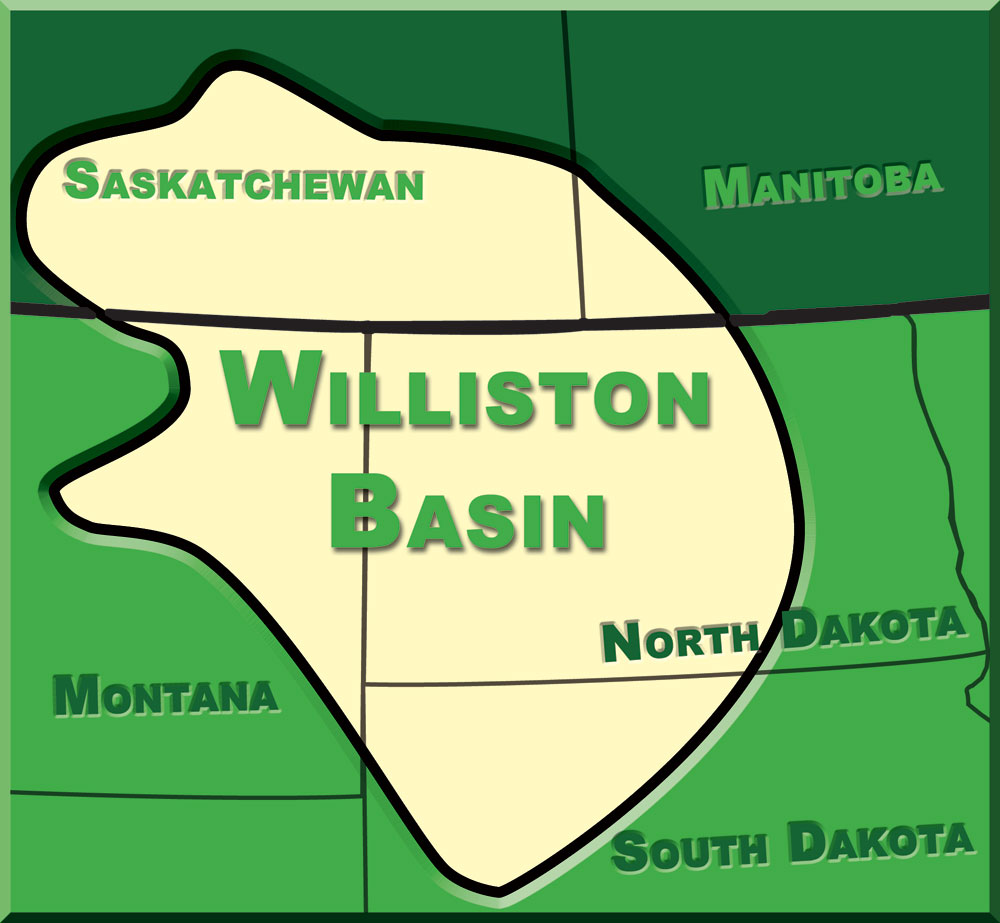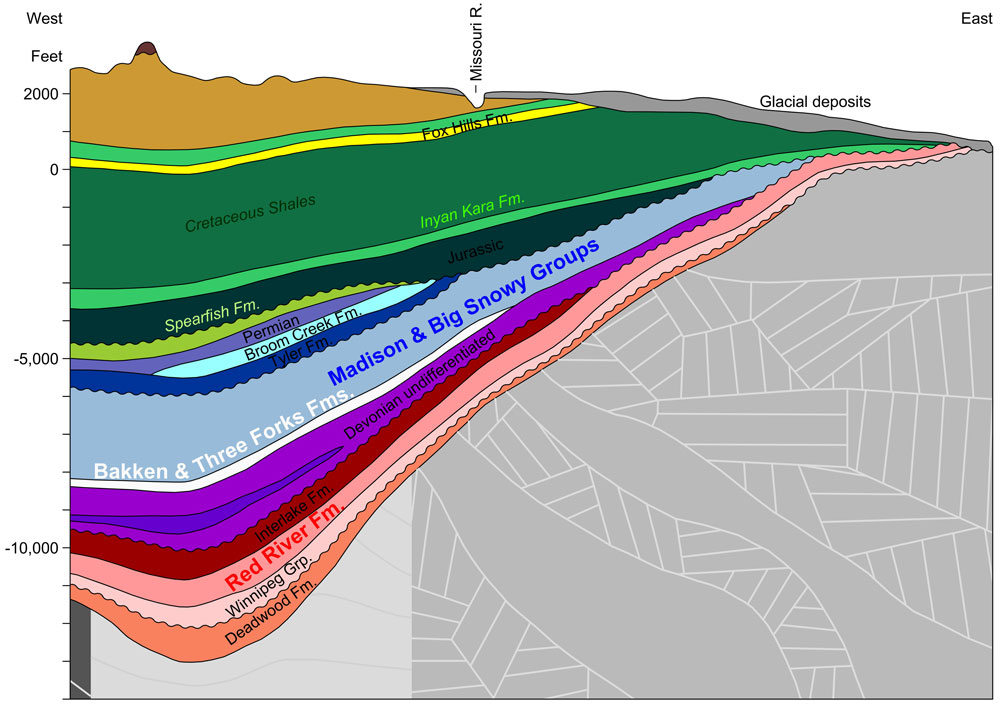
- One of the regions where sedimentary rocks accumulated is named the Williston Basin.
- The subsurface of the Williston Basin holds enormous quantities of petroleum and natural gas.
- The deepest part of the basin is near the city of Watford City.
- The Williston Basin contains the Bakken Formation, layers of rock containing oil that lie about 10,000 feet, or nearly two miles, below the surface.
- The subsurface of the Williston Basin holds enormous quantities of petroleum and natural gas.
- The Bakken Formation is an oil-rich rock unit occupying about 145,000 square miles, or 93 million acres, of the subsurface of the Williston Basin. Stratigraphic Column NDGS: Inspect the North Dakota Stratigraphic Column and see if you can find where the Bakken Formation is. Graphic courtesy of the North Dakota Geological Survey.
- The Bakken was deposited about 360 million years ago.
- The part of the Bakken located in North Dakota underlies about 12,000 square miles, or about 8 million acres.
- The Bakken Formation was named after Henry Bakken, a Tioga, North Dakota farmer, who owned the land where the formation was first discovered.

- The Three Forks formation is an oil-rich rock unit found below part of the Bakken.
- The Three Forks is thicker and broader than the Bakken and extends farther east in North Dakota than the Bakken.
- The Bakken/Three Forks is about the same size as the state of West Virginia.
- The United States Geological Survey (USGS) called the Bakken the largest continuous oil accumulation it had ever assessed.
- The USGS estimates that with current technology, up to 7.4 billion barrels of oil could be extracted from the Bakken and Three Forks Formations.
- The Three Forks is thicker and broader than the Bakken and extends farther east in North Dakota than the Bakken.
Oil is measured in units called barrels. A barrel of oil is equal to 42 U.S. gallons. (The average gasoline tank on a car holds 12 to 16 gallons of fuel.) The abbreviation for barrels, when referring to oil, is bbl. In the 1860s, when oil production began (in Pennsylvania), many industries used 40-gallon barrels made of wood to ship their beer, whiskey, molasses, etc. By the early 1870s, Standard Oil Company began using 42-gallon barrels for transporting petroleum. In order to assure buyers that they were getting a full 42-gallon barrel, the oil barrels were painted blue. The abbreviation, bbl for blue barrel became the standard abbreviation for oil barrels. Oil has not actually been shipped in barrels since the introduction of oil tankers.


